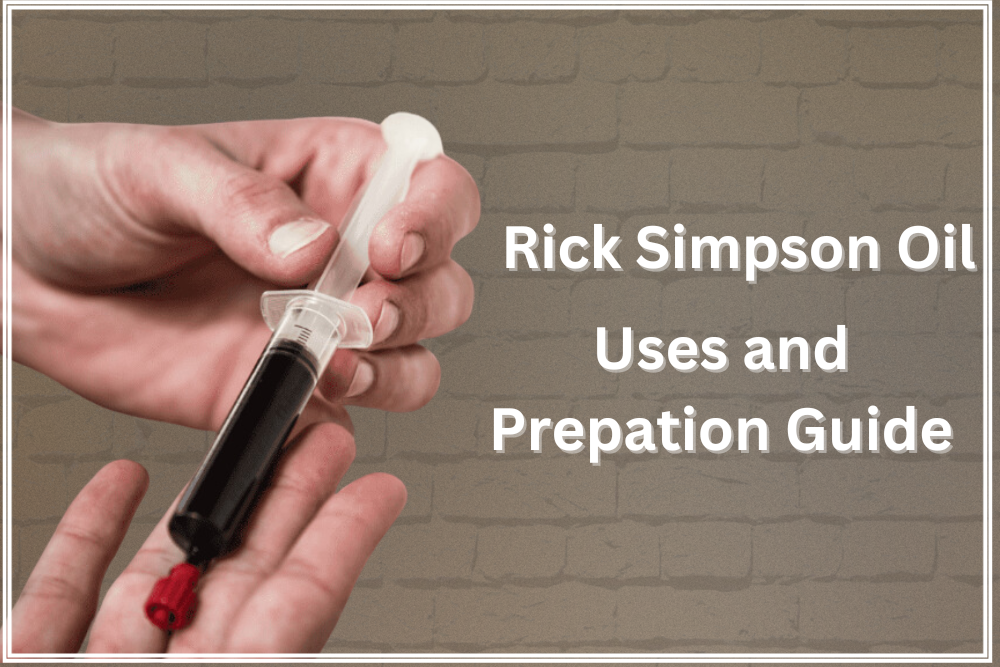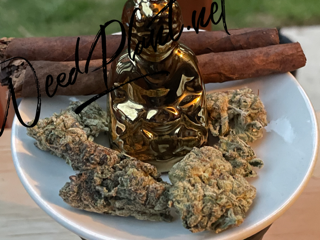Exploring the Relationship Between Mushrooms and Cannabis: Friend or Foe?
Have you ever noticed mushrooms sprouting up alongside your cannabis plants and wondered if it’s a cause for concern or a sign of something positive?
This blog post explores the intriguing relationship between mushrooms and cannabis. We’ll uncover why mushrooms grow around cannabis plants and discuss whether they are good or bad for your garden. Also, we’ll examine the benefits and disadvantages they bring and provide tips for recognizing and preventing mold on your cannabis.
Let’s delve in!
Mushrooms and Other Fungi: what you should know about?

Fungi, including mushrooms, are part of a fascinating and diverse natural kingdom. They are neither plants nor animals but have unique characteristics and life cycles. Fungi play essential roles, such as breaking down organic matter and forming beneficial relationships with plants.
Fungi, an incredibly diverse group of organisms, exist in many species, ranging from simple single-celled organisms to intricately complex ones. These fascinating organisms possess cells that grow in elongated strands called hyphae. Remarkably slender, hyphae can penetrate various substrates such as soil, wood, roots, and solid rock. Some hyphae can stretch for yards, despite their slim appearance.
While mushrooms are commonly recognized as representatives of fungi, they are merely a tiny part of a much larger organism. The bulk of the fungus, referred to as mycelium, thrives underground or within other mediums like wood. Once mature, it produces mushrooms, which serve as the “fruiting body” of the fungus. These mushrooms play a vital role in reproduction by releasing minuscule spores.
These remarkable spores can travel through the air, propelled by the wind, or even hitchhike on the fur of animals, ultimately finding new areas to colonize. And yes, one of those areas could be your very own cannabis garden!
Why Mushrooms Grow Around Cannabis Plants
The presence of mushrooms around cannabis plants is not uncommon. It’s a sign of a healthy and balanced ecosystem.
Organic Matter Decomposition: Cannabis plants, like any other plants, contribute to the accumulation of organic matter in the soil. As this organic matter decomposes, it creates a rich and fertile environment, providing an ideal habitat for fungi, including mushrooms. Fungi are crucial in breaking down complex organic compounds, releasing nutrients that nourish the soil and benefit the ecosystem.
Mycorrhizal Relationships: Many species of mushrooms form mycorrhizal associations with cannabis plants. These associations involve a mutually beneficial relationship between the fungus and the plant roots. The fungus colonizes the roots and extends its hyphae into the surrounding soil, enhancing nutrient uptake for the cannabis plant. In return, the plant provides sugars and carbohydrates to the fungus. These mycorrhizal associations can promote healthier plant growth, increased resistance to stress, and improved nutrient absorption.
Moisture and Humidity: Mushrooms thrive in moist and humid environments. Cannabis plants often require watering, and if the moisture levels in the growing medium remain consistently high, it creates favorable conditions for mushroom growth. Excessive moisture, combined with inadequate airflow, can contribute to the proliferation of mushrooms in the cannabis garden.
Spore Dispersal: Mushrooms produce and release countless tiny spores, which serve as a means of reproduction. These spores are incredibly lightweight and can easily be dispersed by air currents, insects, animals, or human activities. They can land and colonize suitable substrates, including cannabis gardens. Once the spores find a favorable environment, they germinate, and mycelium begins to grow, eventually leading to the emergence of visible mushrooms.
Soil Composition and Microbial Interactions: The composition and quality of the soil in cannabis gardens play a role in determining the types of mushrooms that may appear. Different species of mushrooms have specific soil preferences and thrive under particular conditions. The presence of other soil microorganisms, such as bacteria and other fungi, can also influence the growth and interactions of mushrooms in the cannabis garden.
Are Mushrooms Growing Around Cannabis Plants Good or Bad?
Now, let’s address the big question: are mushrooms growing around cannabis plants good or bad? Well, it depends. There are both benefits and disadvantages to consider.
The Benefits of Fungus in Cannabis Growing
Beneficial fungi establish symbiotic relationships with cannabis plants, enhancing nutrient uptake and root development. Here’re some benefits of growing fungi around cannabis plants.
- Mutualistic Symbiotic Relationship: Fungi and cannabis plants form a mutually beneficial partnership, known as a mutualistic symbiotic relationship.
- Nutrient Exchange: Fungi, unable to photosynthesize, bind to the roots of plants to access carbohydrates and amino acids. In return, they enhance the plant’s nutrient uptake and water absorption capabilities.
- Enhanced Plant Health: The presence of fungi improves the overall health and resilience of cannabis plants. They help suppress diseases in the soil and increase the plant’s ability to withstand harsh conditions, such as drought.
- Increased Yield Potential: Introducing mycorrhizae, a type of beneficial fungus, to cannabis gardens can naturally enhance plant health and potentially increase overall yield.
- Pest Resistance: Fungi, like mycorrhizae, can contribute to reducing susceptibility to pests and environmental stressors, further bolstering the resilience of cannabis plants.
- Commercial Mycorrhizal Supplements: Cultivators can purchase commercial mycorrhizal supplements and add them to the soil to harness the benefits of these beneficial fungi.
The Disadvantages of Fungus in Cannabis Gardens
However, it’s essential to recognize that not all mushrooms growing around cannabis plants are beneficial. Some species may be parasitic or compete for resources, potentially affecting the growth and health of cannabis plants.
Moreover, excessive moisture and poor airflow can create favorable conditions for harmful types of fungus, known as molds and mildews, which can threaten the garden. Monitoring mushroom growth and distinguishing between beneficial and harmful species like molds is crucial to maintain a healthy cannabis garden.
Mold is a sneaky fungus that can infect cannabis plants, wreaking havoc on their health and ruining all your efforts. Worse, it often strikes right before harvest, undoing weeks of hard work.
But fear not! Knowing the signs of mold and taking preventive measures, you can avoid this pesky problem.
When it comes to growing cannabis, it’s essential to be aware of certain types of mushrooms that can threaten your plants. Here are some mushrooms commonly found around cannabis gardens that can be harmful:
- Psilocybe cubensis: While Psilocybe cubensis mushrooms are known for their psychoactive properties, they can compete with cannabis plants for resources and hinder their growth and development. citation
- Amanita muscaria: Recognizable by its iconic red cap with white spots, Amanita muscaria is a mushroom that contains toxins. Ingesting even a small amount of this mushroom can lead to severe health issues. citation
- Galerina spp.: Some species within the Galerina genus produce deadly toxins called amatoxins. Ingesting these mushrooms can cause severe liver damage and even be fatal.
- Cortinarius spp.: Certain species within the Cortinarius genus contain toxins that can be harmful when consumed. It’s crucial to avoid these mushrooms around your cannabis plants.

citation
While mushrooms growing in your cannabis garden can have positive benefits, such as nutrient cycling and mycorrhizal associations, it’s essential to be cautious and distinguish between beneficial and harmful species. If you’re unsure about any mushrooms, it’s best to consult a knowledgeable mycologist or remove them to ensure the safety of your cannabis plants.
Recognizing and Preventing Mold on Cannabis

Mold can be a real headache for cannabis growers. One of the most common types is called Botrytis, or bud rot. It’s a sneaky fungus that infects cannabis buds from the inside, turning them grayish-white and slimy. Once you spot it, it’s usually too late to save the affected buds.
But fear not! You can take steps to prevent mold formation in your cannabis garden. Bud rot tends to target plants with dense buds, so keeping your plants well-trimmed for proper air circulation is crucial. Also, pay attention to the temperature and humidity of your growing room. Mold loves cool and damp conditions.
To minimize the risk of bud rot, keep daytime temperatures above 70°F and nighttime temperatures above 55°F. During the vegetative stage, humidity levels around 70% are tolerable, but you should lower them significantly during the flowering stage.
Here are some additional measures to reduce the chances of bud rot:
Don’t overwater your plants: Allow the soil to dry between waterings, especially as the plants approach flowering.
Maintain cleanliness. Keep your grow room, equipment, clothing, and hands clean to minimize the spread of mold spores.
Regularly inspect your plants and promptly remove any infected buds you find.
Pay attention to the drying and curing stages. Hang the buds with enough space for good air circulation. Optimal drying conditions are a room temperature of 65-70°F and humidity below 50%.
Following these guidelines and staying vigilant can help prevent mold formation and protect your precious cannabis buds. For more in-depth information on preventing and treating cannabis mold, check out our comprehensive article on bud rot. Happy growing!
Exploring the Relationship Between Mushrooms and Cannabis: Friend or Foe: Final Thoughts
In conclusion, mushrooms growing around cannabis plants can be a positive sign of a thriving ecosystem. Beneficial fungi contribute to the overall health and productivity of your garden. However, monitoring mushroom growth and distinguishing between beneficial and harmful species is crucial. Mushroom identification and preventing mold is vital for safeguarding cannabis plants and ensuring a high-quality harvest.
Embrace the wonders of mushrooms in your cannabis garden and appreciate the intricate balance of nature.


